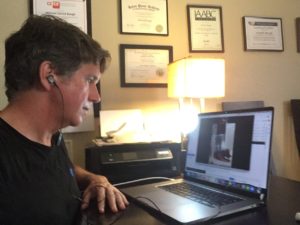We love our dogs. We want nothing but the best for them. And, when their behavior is troubling or even dangerous we want competent professional help.
The trouble is dog training is an unregulated profession. Lots of professions require state licenses, including exterminators, hair and nail professionals, plumbers and electricians, and veterinarians and vet techs (of course). Dog training is not on the list in any U.S. state.
We are self-regulated. Anyone can call himself or herself a dog trainer. So, what should you look for when choosing a trainer or dog behavior consultant? What’s the most important factor?
Education is certainly very important. Competent dog behavior professionals invest a lot of time and money into learning their profession. The very best engage in hours of continuing education every year. They focus on learning Applied Behavior Analysis, best practices for teaching humans and dogs, as well as dog handling skills.
Experience is great, so long as the trainer is practicing sound techniques backed by reliable behavior science. Anyone can do things wrong for a long time. Quality experience requires learning the profession well and putting it into practice effectively year after year.
Credentialing is essential. Excellent dog trainers and dog behavior consultants look to their peers for standards of excellence and accountably. This is different than winning ribbons at dog shows. While that may prove a trainer can effectively teach a number of skills to his own dog, it does not speak to how he teaches his human clients with a variety of dog behavior issues. Professional certification, however, requires that the dog behavior professional prove his or her breadth and depth of knowledge and skills. The two most honored certifications are the Certified Professional Dog Trainer (CPDT) and the Certified Dog Behavior Consultant (CDBC). Each is rigorous in its requirements to achieve and maintain.
Education, experience and credentials are all important. But, none is as key as this last factor when choosing a dog trainer or dog behavior consultant.
Transparency. Your trainer or behavior consultant should be able to answer your questions before you hire him or her. How will you treat my dog if he does something wrong? Challenge him or her to be specific. What will you do when my dog does something correctly? What training tools do you use? And yes, what is your education, experience, and what credentials have you earned? Look for clarity in the answers, offered freely and without hesitation. Qualified dog behavior professionals should have web sites rich with information and modest in their promises. Sure, a bit of marking is fine. But, we all know what it means if something sounds too good to be true. Look for authenticity. Behavior consultants and trainers who value transparency will post videos of their work. They will seek and share feedback from clients. They will write blogs about their cases; publish their knowledge; put themselves out there to see.
Excellent trainers and behavior consultants celebrate positive reinforcement learning. They are eager to teach it to you. Beware the trainer who wants to take your dog away and won’t disclose what happens behind their closed doors. Remember transparency. The dog trainer you are looking for has nothing to hide.
Michael Baugh teaches dog training in Houston TX. He specializes in fearful and aggressive dog training.
Related video: The World Dog Trainers’ Transparency Challenge



